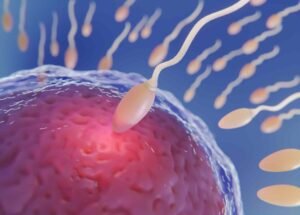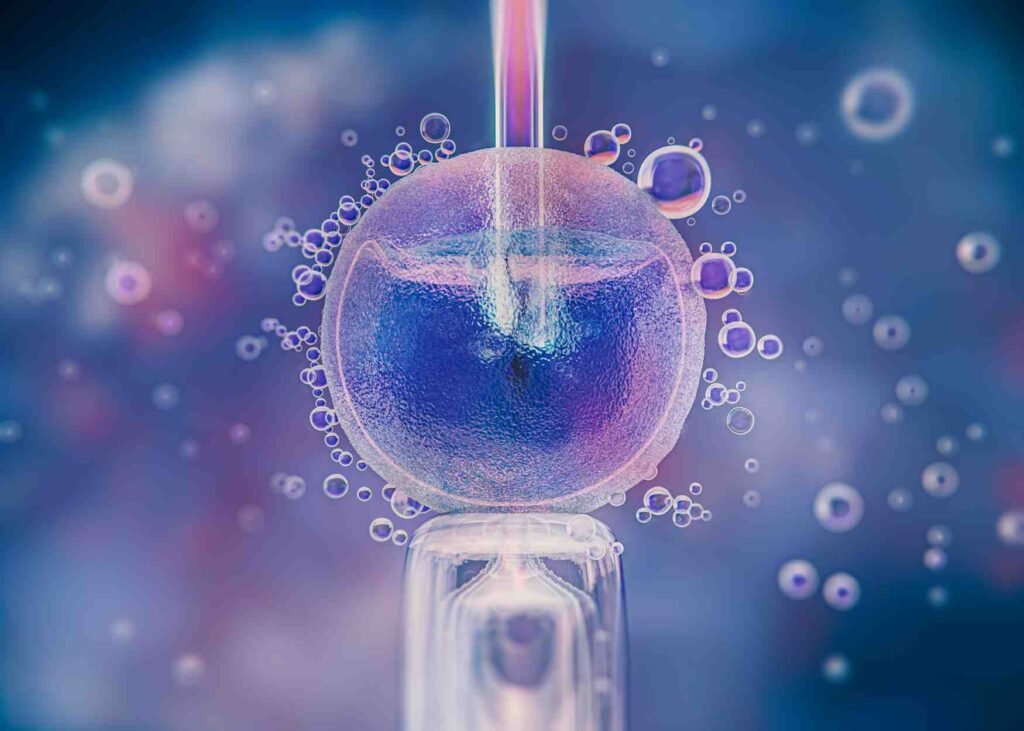How does an IVF Centre perform the ICSI Process?
The journey can be as complex as it is emotional, when it comes to fertility treatments. For couples struggling with male infertility, the ICSI process (Intracytoplasmic Sperm Injection) offers a beacon of hope. This advanced technique is often the go-to method when traditional In Vitro Fertilization (IVF) might not yield the desired results due to severe male infertility factors. But how exactly does an IVF centre perform the ICSI process? What are the steps involved? In this blog, we’ll take you through a detailed, step-by-step look at the ICSI process, offering insights into each phase and helping you understand how this cutting-edge procedure works.
What Is the ICSI Process?
Before we dive into the details, let’s first clarify what the ICSI process is all about. The ICSI process, short for Intracytoplasmic Sperm Injection, is a specialised form of IVF. While traditional IVF involves mixing eggs and sperm in a lab dish and hoping that fertilization occurs naturally, the ICSI process takes things a step further. In ICSI, a single sperm is directly injected into an egg, facilitating fertilization in cases where natural fertilization might be difficult or impossible due to sperm-related issues.
This technique is particularly useful in cases where the male partner has a low sperm count, poor sperm motility, or abnormal sperm morphology. It’s also used when previous IVF attempts have failed, or when sperm needs to be retrieved surgically from the testicles due to obstructions or other medical conditions.

The Steps Involved in the ICSI Process
1. Initial Consultation and Assessment:
Every successful fertility treatment begins with a thorough consultation and assessment. Before the ICSI process begins, the couple will meet with a fertility specialist to discuss their medical history, previous fertility treatments, and any specific challenges they’ve faced in trying to conceive.
a. Comprehensive Medical History
The consultation will start with a detailed review of the couple’s medical history. The doctor will ask about previous pregnancies, miscarriages, and any known medical conditions that could affect fertility. For the male partner, this often involves a semen analysis to assess sperm count, motility, and morphology. If there are any significant abnormalities, further testing may be recommended.
b. Physical Examination and Diagnostic Tests
In addition to reviewing medical history, the doctor will perform a physical examination of the male partner to check for any anatomical issues, such as varicoceles or undescended testicles, that could be contributing to infertility. The female partner may also undergo an examination to assess her reproductive health.
Once the assessments are complete, the fertility specialist will discuss the most suitable treatment options with the couple. If the ICSI process is recommended, the doctor will explain the procedure in detail, addressing any questions or concerns the couple may have.
2. Ovarian Stimulation and Monitoring:
Once the decision to proceed with the ICSI process has been made, the first major step involves stimulating the female partner’s ovaries to produce multiple eggs. This is crucial because having multiple eggs increases the chances of successful fertilization.
a. Hormonal Stimulation
The female partner will begin a regimen of hormone injections, typically including follicle-stimulating hormone (FSH) and luteinizing hormone (LH). These hormones stimulate the ovaries to produce multiple follicles, each containing an egg. The stimulation phase usually lasts between 8 to 14 days, depending on how the ovaries respond to the medication.
b. Monitoring Progress
Throughout the stimulation phase, the woman will have frequent visits to the IVF centre for monitoring. The doctor will use transvaginal ultrasound to check the size and number of follicles developing in the ovaries. Blood tests may also be conducted to measure hormone levels, ensuring the follicles are maturing as expected.
c. Triggering Ovulation
When the follicles have reached the desired size, the doctor will administer a “trigger shot,” usually of human chorionic gonadotropin (hCG). This injection triggers the final maturation of the eggs and prepares them for retrieval. Timing is critical here, as the eggs need to be retrieved at the right moment to maximize the chances of successful fertilization during the ICSI process.
3. Sperm Collection and Preparation:
While the female partner is undergoing ovarian stimulation, the male partner will prepare for sperm collection. The sperm is a critical component of the ICSI process, and its quality can significantly influence the outcome.
a. Collecting the Sperm Sample
On the day of egg retrieval, the male partner will provide a semen sample. This is typically done through masturbation in a private room at the IVF centre. If there are difficulties in producing a sample on the day, or if the sperm count is very low, the doctor may recommend using a previously frozen sample or retrieving sperm surgically.
Once the sperm sample is collected, it undergoes processing in the lab. The goal is to isolate the healthiest and most motile sperm for use in the ICSI process. The embryologist will carefully examine the sperm, selecting the best candidates for injection into the eggs.
4. Egg Retrieval:
Egg retrieval is a key step in the ICSI process and is performed in a surgical setting at the IVF centre. The procedure is minimally invasive and is typically done under sedation or light anaesthesia.
a. The Retrieval Procedure
During the egg retrieval procedure, the fertility specialist will use an ultrasound-guided needle to aspirate the eggs from the follicles. The needle is inserted through the vaginal wall and into the ovaries, where it gently sucks out the fluid containing the eggs. The entire procedure usually takes about 20 to 30 minutes, and the patient can go home the same day after a short recovery period.
b. Post-Retrieval Care
After the egg retrieval, the woman may experience mild cramping or spotting. These symptoms are usually short-lived, and most women can resume normal activities within a day or two. The retrieved eggs are then immediately taken to the lab, where they will be prepared for the ICSI process.

5. The ICSI Procedure:
Now comes the heart of the ICSI process. This is where the magic happens—where science and skill come together to create the potential for new life.
a. Preparing the Eggs
In the lab, the embryologist will carefully examine the retrieved eggs. They will remove the surrounding cells to get a clear view of the eggs and identify those that are mature and ready for fertilization. Only mature eggs can be used in the ICSI process.
b. Injecting the Sperm
Using a specialized microscope and micromanipulation tools, the embryologist selects a single sperm. This sperm is immobilized by gently tapping its tail, then carefully drawn into a fine glass needle. The needle is then used to penetrate the outer shell of the egg (the zona pellucida) and inject the sperm directly into the egg’s cytoplasm.
This part of the ICSI process requires an incredible level of precision. The embryologist must ensure that the egg is not damaged during the injection and that the sperm is correctly placed to maximise the chances of successful fertilization.
6. Fertilization and Embryo Culture:
After the sperm has been injected into the egg, the real waiting game begins. The fertilized eggs, now called zygotes, are placed in a special culture medium and monitored closely as they begin to develop.
a. Checking for Fertilization
Approximately 18 to 24 hours after the ICSI procedure, the embryologist will check the eggs for signs of fertilization. Typically, a fertilized egg will have two pronuclei, which represent the genetic material from both the egg and the sperm. Not all eggs will fertilize, but those that do will continue to be cultured in the lab.
b. Embryo Development
The fertilized eggs are allowed to develop into embryos over the next few days. During this time, the embryologist will monitor their growth, assessing the quality and development of each embryo. Typically, the embryos are cultured for 3 to 5 days before the best ones are selected for transfer.
c. Embryo Grading
Embryos are graded based on several factors, including the number of cells, the symmetry of cell division, and the absence of fragmentation. Higher-quality embryos are more likely to result in a successful pregnancy, so careful attention is given to selecting the best embryos for transfer.
7. Embryo Transfer:
Embryo transfer is the final and perhaps most anticipated step in the ICSI process. After days of careful monitoring and nurturing in the lab, the time comes to introduce the embryo(s) into the female partner’s uterus, with the hope that they will implant and grow into a successful pregnancy. The doctor uses a thin catheter to gently place the selected embryo into the uterus. This stage is where the journey of assisted reproduction culminates in the possibility of new life.

Your Pathway to Parenthood with ICSI Process
The ICSI process is a remarkable solution for couples facing male infertility. It’s a detailed, step-by-step procedure that starts with a thorough consultation to understand your unique situation. From there, the process moves into stimulating the ovaries, carefully retrieving eggs, and then the real magic happens—injecting a single sperm directly into an egg. This direct approach significantly increases the chances of fertilization when natural methods just aren’t enough.
Once fertilization occurs, the embryos are nurtured in the lab until they’re ready for transfer. This is where all the careful preparation and precise work come together. The selected embryos are gently placed into the uterus, with the hope that one will implant and develop into a healthy pregnancy.
The entire journey through ICSI is guided by experienced professionals who are there to support you every step of the way. It’s a blend of science and care, designed to give you the best chance at starting or growing your family. If male infertility has been a hurdle, ICSI could be the pathway that finally leads to success.


